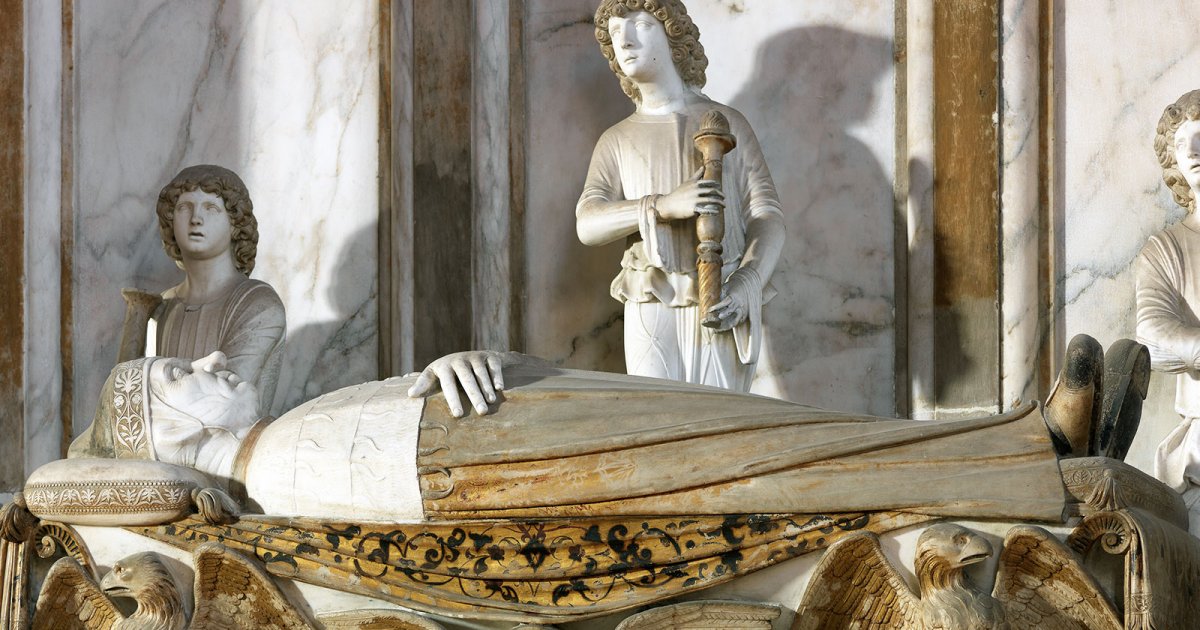SAN ZANIPOLO, Right Side
 Language: English / USA
Language: English / USA
You've almost reached the end of the right nave; the last chapel awaits you with a sumptuous Baroque art complex that forms the devotional heart of the Basilica of San Zanipolo. Indeed, it is dedicated to the founder of the Dominican order which the basilica belongs to. The chapel is from the first half of the 1700s and contains bronze reliefs and paintings focusing on the life of St. Dominic, who was born in a Spanish village and died in Bologna in 1221. And now look up and immerse yourself in the spectacular painting on the ceiling: it's the Glory of St. Dominic by Giambattista Piazzetta, one of the greatest painters of the rich 18th-century Venetian school. The painting has a spiral pattern that forces your glance upwards. Start looking at the painting by first looking at the friars and nuns in the foreground, then continue with the figure of St. Dominic being raised by the angels towards the Madonna, then continue looking upwards to the blinding light surrounded by angel musicians singing celestial songs. The effect of ascending to the sky is obtained without any architectural structures and without the reckless use of perspective, thanks only to refined pictorial strategies and the beauty of a color that becomes clearer and clearer in a very effective and theatrical way.
Now pause the audio guide and go to The Alms of Sant'Antonino by Lorenzo Lotto.
You are standing before another one of the masterpieces preserved in this basilica: this sixteenth-century painting exalts the figure of the Dominican Antonino Pierozzi, who founded the famous monastery of St. Mark in Florence and was known for his intense activities giving alms to the poor. It's a lively scene that's divided vertically: the saint is sitting on a throne, flanked by two angels that seem to speak to him softly in his ear, as if to convey the will of God on his giving of alms. Below him you can see two deacons protruding from a parapet: the first represents giving money to the poor, and the second receives the entreaties of the "shameful", or the formerly wealthy who have fallen into poverty and are "ashamed" to ask for charity. A theatrical red curtain raised at the sides frames the scene, adding a clanging touch of color.
FUN FACT: San Vincenzo Ferrer is called "The Angel of the Apocalypse" because he repeated that doomsday was imminent in his sermons. He has been attributed many miracles: he made rain fall during a drought and saved a mason from a fall. For this reason he is dear to the peasants and is the patron saint of masons.



